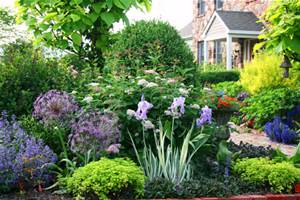 Many homeowners have questions about shrub pruning. When do I prune shrubs? How much do I prune from a shrub? Where do I make pruning cuts? While there is not an exact answer that works for every situation, there are some general pruning principles to follow that will help improve the health and appearance of your shrubs.
Many homeowners have questions about shrub pruning. When do I prune shrubs? How much do I prune from a shrub? Where do I make pruning cuts? While there is not an exact answer that works for every situation, there are some general pruning principles to follow that will help improve the health and appearance of your shrubs.
When should I do shrub pruning?
Typically, the best time for shrub pruning is in the early spring before new growth begins. In Utah County, this will typically mean sometime in March, but can depend on the weather in the spring. From a practical standpoint, there are no leaves on the shrub, so this allows for easy inspection of and access to the individual branches.  Additionally, in the early spring, the shrub has not invested energy and resources into new growth yet, reserving that energy for new desired growth, as dictated by your pruning cuts. A third benefit to early pruning is the significantly lower risk of disease in the colder temperatures.
Additionally, in the early spring, the shrub has not invested energy and resources into new growth yet, reserving that energy for new desired growth, as dictated by your pruning cuts. A third benefit to early pruning is the significantly lower risk of disease in the colder temperatures.
There are exceptions to this timing for shrub pruning. Shrubs that will flower in the spring are best pruned after the blooming has finished. These shrubs typically bloom on “year-old” wood, so removing this growth will significantly impact the number of blooms on the shrubs. Pruning for these shrubs should occur soon after blooming has ceased for the year to allow for new growth to develop through the remainder of the season. This will be the growth that sports the blooms the following spring.
How much do I prune from a shrub?
A general rule to follow is to never remove more than one-third of a shrub at a time. It is best to prune small amounts each year. Benefits of this less intense, but regular shrub pruning schedule include: less stress and shock to the plant, less work and effort on your part (due to smaller branches that can be pruned with bypass hand pruners), and better control of the shape and appearance of the shrub over time. You will always want to first remove the three D’s- dead, diseased, or damage- from your shrubs.
If you have very overgrown shrubs, it may be a good idea to hire someone who is experienced with shrub pruning to help you get them in check, after which you can take up the annual pruning on your own. Even with these overgrown shrubs, it is still not recommended to remove more than one-third at a time. Instead you will want to reduce the size and thin the shrubs over the course of a few years.
Where do I make shrub pruning cuts?
First of all, let’s discuss to main types of pruning cuts: thinning and heading.
 A thinning cut is one that removes a branch back to the branching point (the point at which it grew from the parent branch). These cuts are used to allow light and air into the shrub and prevent rubbing branches, which can lead to disease. The resulting growth will be spread evenly throughout the shrub.
A thinning cut is one that removes a branch back to the branching point (the point at which it grew from the parent branch). These cuts are used to allow light and air into the shrub and prevent rubbing branches, which can lead to disease. The resulting growth will be spread evenly throughout the shrub.
A heading cut is one that is made at any point on the branch after the branching point. Essentially this cut is used to shape the shrub. The resulting growth will come primarily from the last bud before the cut, and it will grow in the direction the bud is pointing. It is important to make sure the cut is just above the last desired bud and that this bud is pointing in the desired direction.
It is typically best to begin with the thinning cuts to establish the main structure and remove the three D’s. Then finish up with the heading cuts for your final shaping of the shrub. This also saves time, as you will not be thinning out branches you already spent time heading.
While this is not a complete lesson on shrub pruning, and other factors may apply for specific shrubs or scenarios, this guide should provide you a starting point on maintaining the health and appearance of your shrubs, and your first step in becoming a shrub pruning expert.
